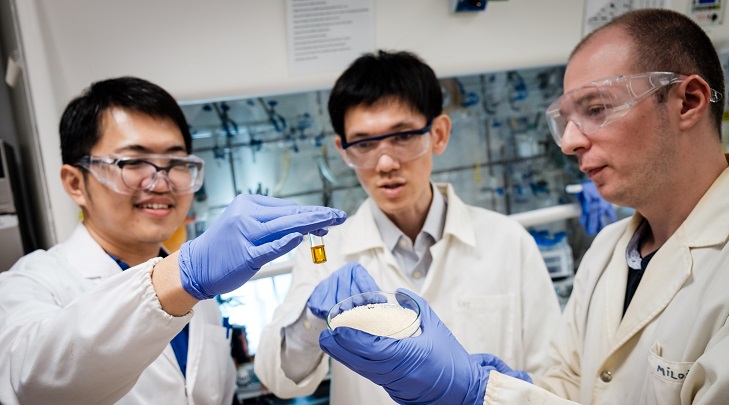Vanadium photocatalyst transforms plastic with sunlight
Researchers at NTU Singapore have discovered a vanadium-based photocatalyst that can convert plastic waste into useful chemicals using sunlight.

The team first took polyethylene samples and dissolved them in a solvent at 85°C. A powdered catalyst comprised of vanadium was then added, and the solution exposed to artificial sunlight. Over a period of six days, the photocatalyst broke down the carbon-carbon bonds that make most plastics difficult to break down without high temperatures. The catalyst was specially designed to break these bonds, by latching onto a nearby chemical group known as an alcohol group and using energy absorbed from sunlight to unravel the molecule like a zipper.
Titania photocatalyst recycles CO2 into hydrocarbons
Photocatalyst generates hydrogen from water
Not only does the catalyst break down the stubborn carbon-carbon bonds, the chemicals that the reaction creates are also inherently useful. The process turned the polyethylene into formic acid, a naturally occurring preservative and antibacterial agent, which can also be used for energy generation by power plants and in hydrogen fuel cell vehicles. The research is published in Advanced Science.
Register now to continue reading
Thanks for visiting The Engineer. You’ve now reached your monthly limit of news stories. Register for free to unlock unlimited access to all of our news coverage, as well as premium content including opinion, in-depth features and special reports.
Benefits of registering
-
In-depth insights and coverage of key emerging trends
-
Unrestricted access to special reports throughout the year
-
Daily technology news delivered straight to your inbox










Water Sector Talent Exodus Could Cripple The Sector
Well let´s do a little experiment. My last (10.4.25) half-yearly water/waste water bill from Severn Trent was £98.29. How much does not-for-profit Dŵr...